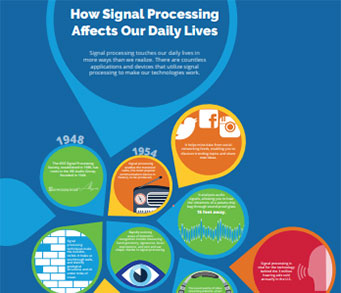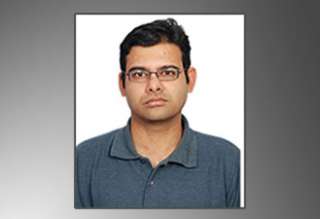SPS Feed
Top Reasons to Join SPS Today!
1. IEEE Signal Processing Magazine
2. Signal Processing Digital Library*
3. Inside Signal Processing Newsletter
4. SPS Resource Center
5. Career advancement & recognition
6. Discounts on conferences and publications
7. Professional networking
8. Communities for students, young professionals, and women
9. Volunteer opportunities
10. Coming soon! PDH/CEU credits
Click here to learn more.
The Latest News, Articles, and Events in Signal Processing
September 21-25, 2020
Location: Florence, Italy
April 27-May 1, 2020
Location: Changed to -- Virtual Conference
March 24-27, 2020
Location: Changed to--Virtual Conference
July 6-10, 2020
Location: Changed to -- Virtual Conference
July 11-14, 2021
NOTE: Location changed to--Virtual Conference
(Formelry, Rio de Janeiro, Brazil)
Lecture Date: September 18-19, 2019
Chapter: Malaysia
Chapter Chair: R. Logeswaran
Topics: Signal Processing and the Search for MH370
Beyond the Kalman Filter: 25 Years of Particles and Other Ransom Points
Lecture Date: December 10, 2019
Chapter: Delhi
Chapter Chair: Anubha Gupta
Topics: Set Theoretic Feasibility and Optimality Frameworks for Data Hiding and Privacy
Lecture Date: December 7, 2019
Chapter: Uttar Pradesh
Chapter Chair: Uma Tiwary
Topics: Leveraging Old tricks in a New World: Efficient Generation of
Labeled Data for Deep Learning in Medical Image Segmentation
Lecture Date: October 21, 2019
Chapter: Madras
Chapter Chair: S. Salivahanan
Topic: Signal Processing for Neural Prostheses
Lecture Date: October 18, 2019
Chapter: Kerala
Chapter Chair: Suresh Kumaraswamy
Topic: Signal Processing for Health Monitoring of Aerospace Structures
Lecture Date: October 15, 2019
Chapter: Gujarat
Chapter Chair: Suman Mitra
Topic: Signal Processing for Neural Prostheses
Lecture Date: August 5, 2019
Chapter: Gujarat
Chapter Chair: Suman Mitra
Topic: Sensing Technologies and Applications in Smart Lighting and Beyond
Lecture Date: July 23-24, 2019
Chapter: Hyderabad
Chapter Chair: Lalitha Vadlamani
Topic: Machine Learning in Connected Lighting: Applications and Opportunities

The ELIOT project aims to study communication networks of interconnected devices that lie at the core of many key future technologies such as distributed control systems for autonomous vehicles, sensor networks for structural health monitoring and for smart cities. In addition to reliability, all these applications come with strict requirements in terms of: energy efficiency, security, latency and self-optimization capabilities, and demand for innovative enabling technologies. The
January 18-22, 2021
NOTE: Location changed to--Virtual Conference
September 21-23, 2020
NOTE: Location changed to--Virtual Conference
Pages
SPS Social Media
- IEEE SPS Facebook Page https://www.facebook.com/ieeeSPS
- IEEE SPS X Page https://x.com/IEEEsps
- IEEE SPS Instagram Page https://www.instagram.com/ieeesps/?hl=en
- IEEE SPS LinkedIn Page https://www.linkedin.com/company/ieeesps/
- IEEE SPS YouTube Channel https://www.youtube.com/ieeeSPS





















